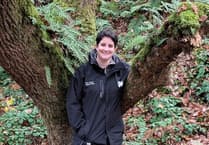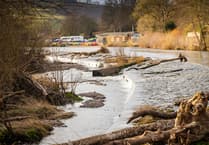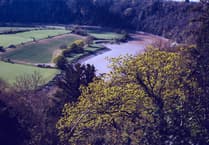- Early warning system to monitor high temperatures and algal blooms
- £100k of monitoring equipment to capture real-time data over the Wye and Lugg catchments
Enhanced by citizen science data, the Environment Agency is using water quality monitoring activity to prioritise how and where to tackle phosphate pollution on the River Wye.
The Wye catchment is an iconic location and hugely important for biodiversity, principally due to the wide range of rare river wildlife. More than 60 per cent of the phosphate load in the catchment is from diffuse agricultural pollution from livestock manure and nutrients washing into the river during heavy rain.
A range of partners through the Wye Nutrient Management Board, including the Environment Agency, Natural England and Natural Resources Wales, are working collaboratively to address concerns about phosphate levels in the catchment and drive forward nature recovery.
Based on the latest water quality monitoring report, which has been enhanced by new data obtained by an ongoing citizen science monitoring programme, the Environment Agency has made a series of recommendations on where actions are most needed and the locations across the catchment where those actions can have the most impact.
This includes a recommendation that partners take a catchment-based approach targeting five upstream areas of the river that have high phosphate levels relative to the wider catchment.
The five catchment areas are based at:
- River Arrow near Kington
- River Arrow near Pembridge and Curl Brook
- River Lugg and tributaries near Presteigne
- Little Lugg and Withington Marsh Brook
- River Frome
Evidence also indicates that efforts to increase shade by tree planting and better management of riparian trees could help mitigate high temperatures. The Environment Agency is developing an algal bloom early warning system to respond to excessive temperatures, with advice for anglers and river users.
The latest water quality monitoring report, along with analysis, activities and plans to improve water quality in the Wye and Lugg river catchments, can be found on the Environment Agency’s recently launched Wye Water Monitoring webpage.
Grace Wight, Area Environment Manager for the Environment Agency, said: “The inclusion of citizen science data in our latest monitoring report is a fantastic step in combining more data sources and is already helping identify where measures can be targeted to reduce the inputs of pollution to the river.
“The scale and complexity of the challenges in the catchment means solutions will take time and must be founded on a strong evidence base.
“Through our new website and ongoing engagement work, we will continue to update our partners and stakeholders so that we can work together to tackle pollution and ensure the future health of the river.”
The Environment Agency continues to scale up its monitoring operation to inform next steps on the Wye. £100,000 has been secured for the Wye and Lugg catchments from a national fund that supports agricultural regulation.
The additional funds will supply monitoring equipment that will capture real-time, high-resolution data over the catchments. The equipment comprises of ten sondes and six auto-samplers that will be positioned across the rivers Wye, Lugg and Arrow.
Enhanced monitoring will support the work of Natural England’s Catchment Sensitive Farming team, which provides advice and guidance to farmers to reduce air and water pollution. This work area has benefitted from increased resource to enable more farmers to access advice and support.
The Environment Agency has also increased farm visits in the catchment, focusing on high-risk locations and previously non-compliant businesses. Increased monitoring will help target regulatory work even further, working with farmers to support environmentally friendly farming that doesn’t damage water quality.





Comments
This article has no comments yet. Be the first to leave a comment.